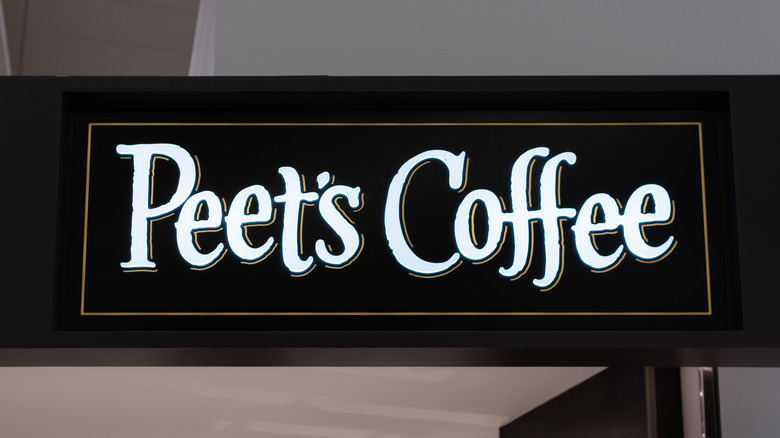Why Starbucks Owes Peet's Coffee For Its Success
Starbucks is everywhere. Even if you're not a coffee drinker, and partaking in the 2.25 billion cups of coffee consumed every day around the world (via Zippia), you're probably still familiar with its iconic siren logo and its distinctive smell that's nearly everywhere you turn. Starbucks is in fact the largest coffee chain in the world, with more than 15,000 shops in the US and 30,000 shops worldwide, according to Cuppabean. Not bad for a shop founded in 1971 in Seattle by three friends who learned everything about the coffee business just the year prior.
Yet many people may not be aware that Starbucks owes much of its success to a much smaller competitor: Peet's Coffee. With just over 240 locations (more than 75% of them in California, via ScrapeHero), Peet's hardly seems to be in the same league, though they are known for the quality of their java, which is sold in 14,000 stores across the US, notes Fried Coffee.
Starbucks owes its existence to Alfred Peet
For one, the three original founders of Starbucks — Jerry Baldwin, Gordon Bowker, and Zev Siegl — all worked for the late Alfred Peet, founder of Peet's, at his Berkeley, California flagship over the Christmas season in 1970. Peet taught the three men everything they know about coffee, including how to properly roast it (via Go Coffee Go). Peet even gave the three men permission to copy the design of his store when they opened the very first Starbucks in 1971, according to Sprudge. Not only was the design the same, but they also operated the same model of selling freshly roasted coffee beans, with a coffee bar for customers to sample what they were purchasing. Starbucks also sold Peet's roasted beans until they could acquire their own supply.
There's also the groundwork Peet's set for fundamentally changing coffee culture in the US. When Dutch-born Alfred Peet first emigrated to the US, the coffee served was not the same, likely a lingering legacy from World War II and the use of inferior beans (via The Seattle Times). Peet was the visionary who "taught Americans how to drink coffee," says Sprudge by importing quality beans and roasting them dark — basically how the Europeans enjoyed it. The industry was never the same after that, and it set the stage for Starbucks to eventually become the dominant force that it is today.

